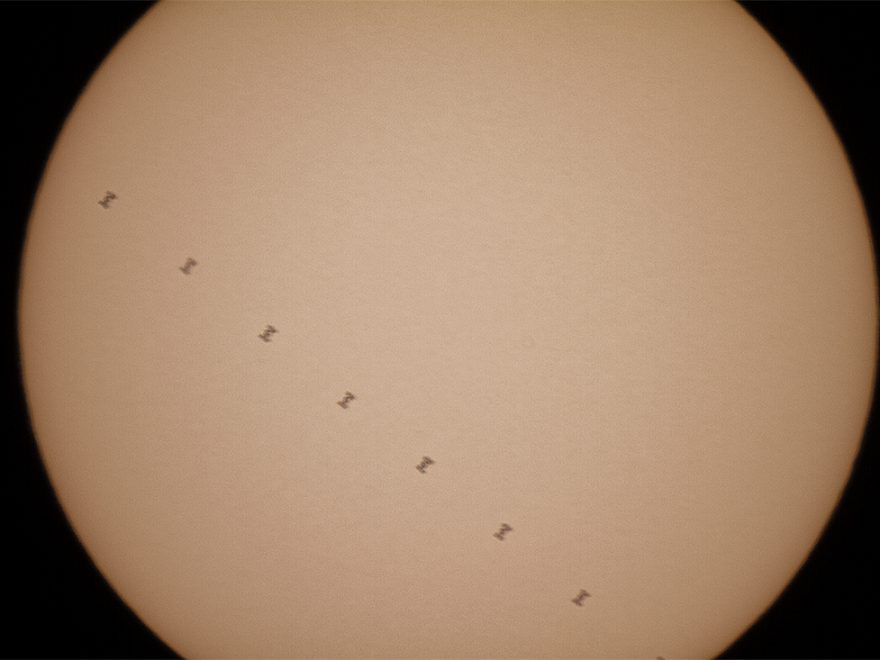People in southwestern Harris County will have an opportunity to see a lunar and solar transit by the International Space Station this week, weather permitting. Both transits will require some form of optical aid (binoculars, telephoto lens, telescope) in order to be seen.
Note: The information below is accurate at the time of this post. However, due to the dynamic orbit of the ISS, the information is subject to change prior to the event. Please visit the ISS Transit Finder website for the most up-to-date information for your specific location.
Lunar transit – Tuesday, February 16
To see the lunar transit you need to be within a 2.6 mile-wide path that runs from the Blanton Creek WMA in the west to Gray Rock Rd in the south. The ISS will cross the center of the moon when viewed from the center line of this path. At the northern and southern edges of the path the ISS will barely cross the moon. In the west the transit will occur at 3:24:58 PM, while in the south it will occur at 3:25:01 PM.

The crescent moon should be easy to spot in the southeastern sky approximately 60° above the horizon. This simulated view from the Stellarium planetarium program shows what the transit will look like through a telescope.
Update: Here is what the actual transit looked like: https://harriscountyskywatcher.com/2021/02/16/iss-daytime-lunar-transit/
Solar transit – Friday, February 19
WARNING – Viewing the sun without eye protection can cause serious eye injury or blindness. Do not look at the sun without solar glasses (aka eclipse glasses) and do not attempt to watch a solar transit without having a solar filter affixed to the front of your optical aid.
Following almost the same path as the lunar transit but with a slightly larger visibility area (5.7 miles wide), the solar transit will be visible at 2:39:10 PM in the west and 2:39:13 PM in the south.

Here is what the solar transit will look like with a DSLR and 400mm lens equipped with a solar filter.

